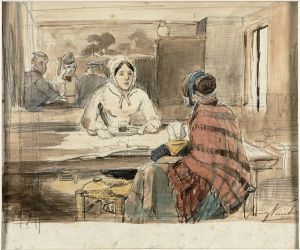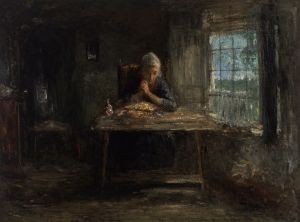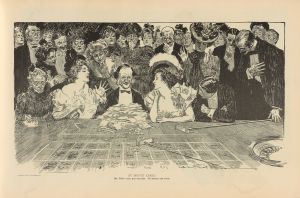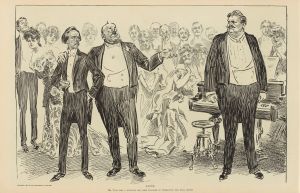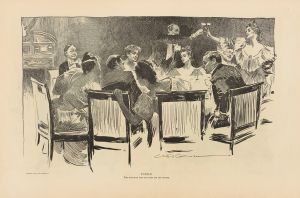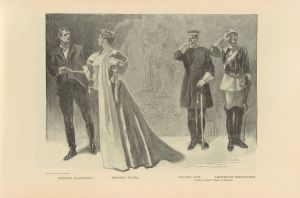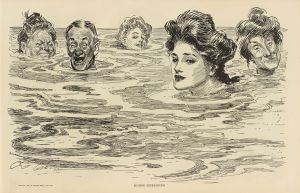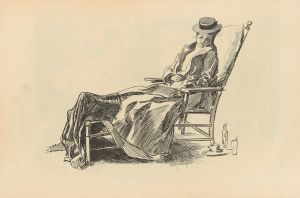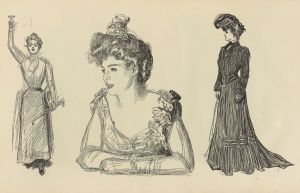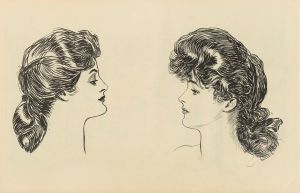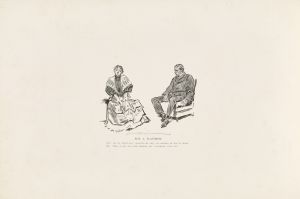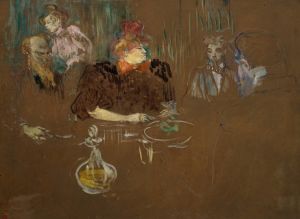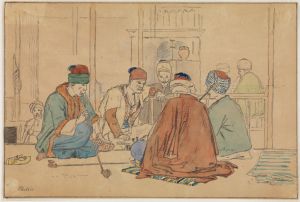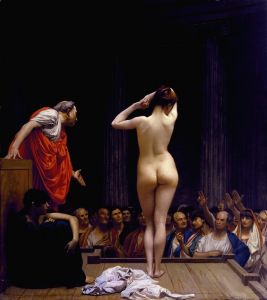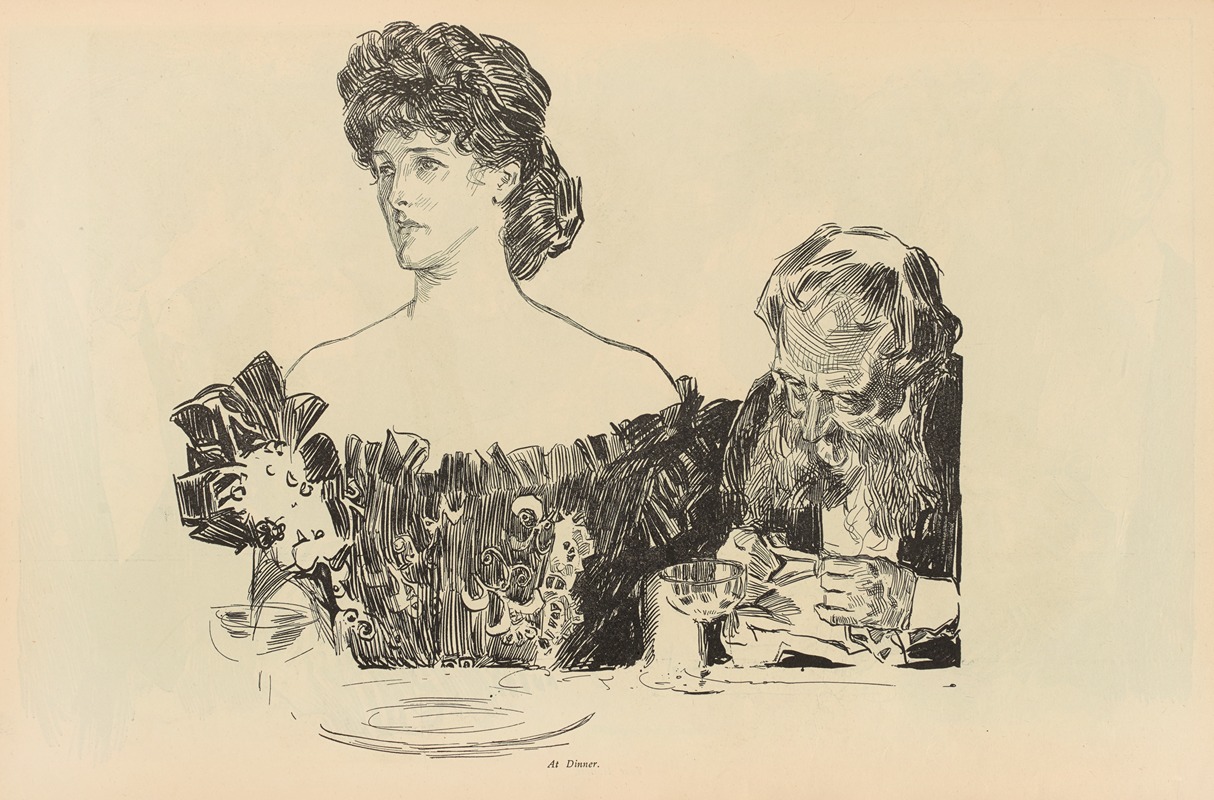
At Dinner
A hand-painted replica of Charles Dana Gibson’s masterpiece At Dinner, meticulously crafted by professional artists to capture the true essence of the original. Each piece is created with museum-quality canvas and rare mineral pigments, carefully painted by experienced artists with delicate brushstrokes and rich, layered colors to perfectly recreate the texture of the original artwork. Unlike machine-printed reproductions, this hand-painted version brings the painting to life, infused with the artist’s emotions and skill in every stroke. Whether for personal collection or home decoration, it instantly elevates the artistic atmosphere of any space.
Charles Dana Gibson was an influential American illustrator, best known for his creation of the "Gibson Girl," an iconic representation of the American woman at the turn of the 20th century. His illustrations captured the spirit and social dynamics of his time, often with a touch of humor and satire. One of his notable works is "At Dinner," which exemplifies his keen observation of social interactions and his skillful artistry.
"At Dinner" is a black-and-white illustration that showcases Gibson's characteristic style, marked by detailed line work and expressive characters. The scene typically depicts a social gathering, often highlighting the interactions between men and women in a dining setting. Gibson's work often reflected the social norms and gender roles of the late 19th and early 20th centuries, and "At Dinner" is no exception. The illustration captures the nuances of social etiquette and the subtleties of communication during a formal meal.
In "At Dinner," Gibson often portrayed the Gibson Girl, his archetype of the idealized American woman. She is typically depicted as confident, independent, and fashionable, embodying the changing roles of women during this era. The men in his illustrations are often shown as attentive and sometimes bemused by the Gibson Girl's charm and wit. This dynamic is a recurring theme in Gibson's work, reflecting the evolving social landscape of the time.
Gibson's illustrations were widely published in popular magazines such as Life, Harper's Weekly, and Scribner's, reaching a broad audience and influencing public perceptions of gender and society. His work was not only a reflection of contemporary culture but also helped shape it, as the Gibson Girl became a cultural icon, influencing fashion and attitudes towards women's independence and capabilities.
"At Dinner" and similar works by Gibson are significant for their artistic merit and their commentary on social conventions. They provide a window into the past, illustrating the complexities of social interactions and the shifting dynamics between men and women during a period of significant change. Gibson's ability to capture these moments with humor and insight is a testament to his talent and his understanding of the human condition.
While specific details about the individual illustration "At Dinner" may not be extensively documented, it is representative of Gibson's broader body of work, which continues to be celebrated for its artistic quality and cultural significance. His illustrations remain a valuable resource for understanding the social history of the United States during the late 19th and early 20th centuries, offering a glimpse into the lives and attitudes of people from that era.





